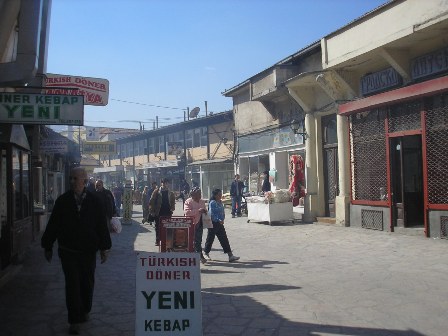 |
Skopje is truly a city of contrasts. You can find yourself walking around soviet-style housing buildings, colourful oriental bazaars, shopping malls with the most luxurious clothing brands, buildings with modern and audacious architecture, and just beside fine examples of mosques, catholic and orthodox churches.
Little by little Skopje is assuming its status as a capital. The city is changing fast, according to the locals I spoke to. |
 |
|
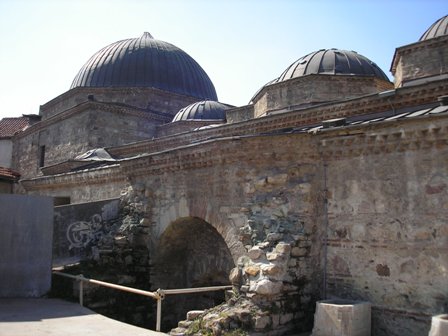 |
The Daut Pasha's Baths are one of the landmarks of Skopje.
They were commanded by Dahut Pasha, Great Vizier of Rumelia, in the 15th Century.
The Baths were converted into an Art gallery in 1948.
The building has thirteen domes organized asymmetrically.
The Baths were divided in two sections, one for women and one for men. |
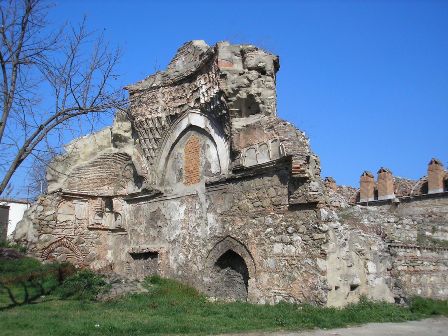 |
It is not known for sure when the baths stopped functioning.
Some say the maintenance of the temperatures in the rooms and of the water required so much firewood. So when the nearby forest of mountain Vodno has been entirely wasted, the Baths had to close.
Others say that the daughter of the Vizier Daut-Pasha was on the Baths when a giant poisonous snake came out of the walls and bit the girl.
After her death her father ordered to close the Baths. |
 |
Mustafa Pasha's mosque is one of the main Islamic buildings in Skopje.
It was built in 1492 on the foundations of a church.
Mustapha Pasha was the vizier of Sultan Selim I and the Ottoman commander of Skopje. He’s buried in the turbeh beside the mosque.
I’ve read that the interior is sumptuous, with wood carvings, a marble mirhab and some very fine decorations and calligraphic records.
Unfortunately it was closed for restoration when I visited Skopje. |
 |
|
 |
Not far from Mustapha Pasha Mosque lies Sveti Spas Church.
The church St. Spas dates from the 15th century but its current appearance is from the 19th century.
It has a large courtyard walled all around; a peaceful spot to relax for a while. |
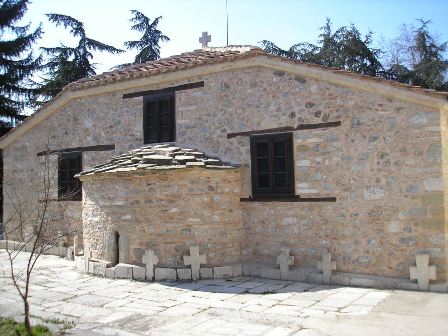 |
Inside, there’s a huge iconostasis with a large Serpent Cross and icons of Virgin Mary, St. John and some bible scenes.
The church is the resting place of Goce Delcev, one of the philosophers and architects of the Macedonian Revolution. |
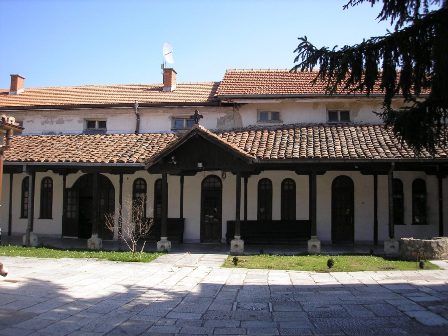 |
One of the city’s most famous citizens is Agnes Gonxha Bojaxhiu.
This Albanian Roman Catholic nun was born in Skopje in 1910.
You don't know her? Oh, sure you do! I'm talking about Mother Theresa. |
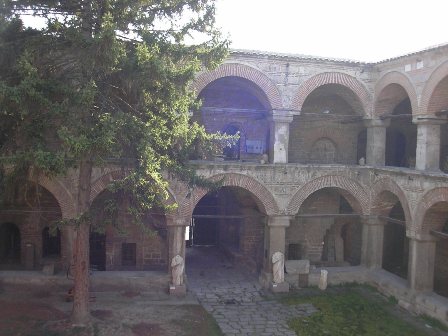 |
This picture was taken inside Kuršumli An, where I spent at couple of hours wandering around .
Kuršumli An Inn was built in the 16th Century and is also one of the symbols of Skopje. It still has the same look than centuries ago. It’s just beside the Museum of Macedonia
The Ans, Inns or Caravanserais are the places where tradesmen and travellers used to rest for the night. Some kind of hotels, intended for caravans in ancient oriental times.
|
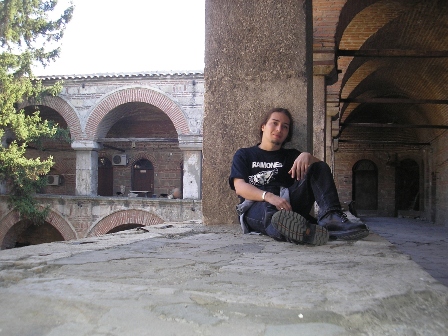 |
One part of the an served to accommodate the tradesmen and their merchandises, while another served as a storage place and included rooms for the servants.
They weren’t religious buildings, so archaeologists called their style profane oriental architecture. In Skopje there are three Ans around the Old bazaar area. Skpje’s Ans don’t have the same function anymore, but their architecture has been preserved.
|
| |